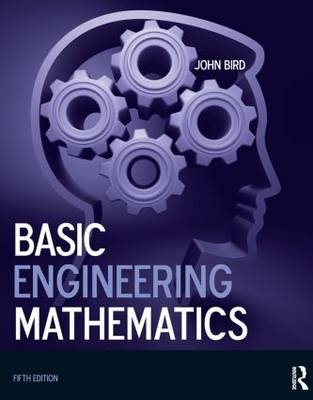
Basic Engineering Mathematics
Elsevier Science Ltd (Verlag)
978-1-85617-697-2 (ISBN)
- Titel erscheint in neuer Auflage
- Artikel merken
Unlike most engineering maths texts, this book does not assume a firm grasp of GCSE maths, and unlike low-level general maths texts, the content is tailored specifically to the needs of engineers. The result is a unique book written for engineering students that takes a starting point below GCSE level. Basic Engineering Mathematics is therefore ideal for students of a wide range of abilities, especially for those who find the theoretical side of mathematics difficult.
Now in its fifth edition, Basic Engineering Mathematics is an established textbook that all students requiring a fundamental knowledge of mathematics of engineering with find essential reading. The content has been designed to meet the needs of students studying Level 2 courses, including GCSE Engineering, the Diploma, and BTEC First specifications. Level 3 students will also find this text to be a useful resource for getting to grips with essential mathematics concepts, because the compulsory topics in BTEC National and A Level Engineering courses are also fully addressed.
John Bird’s approach is based on numerous worked examples, supported by 750 worked problems and 1550 further problems contained within exercises throughout the text. In addition, 14 revision tests are included at regular intervals. Ideal for use as tests or homework, full solutions to the revision tests are supplied on the accompanying instructor’s website.
John Bird, the author of over 100 textbooks on engineering and mathematical subjects, is the former Head of Applied Electronics in the Faculty of Technology at Highbury College, Portsmouth, U.K. More recently, he has combined freelance lecturing at Portsmouth University, with technical writing and Chief Examiner responsibilities for City and Guilds Telecommunication Principles and Mathematics, and examining for the International Baccalaureate Organisation. John Bird is currently a Senior Training Provider at the Royal Naval School of Marine Engineering in the Defence College of Marine and Air Engineering at H.M.S. Sultan, Gosport, Hampshire, U.K. The school, which serves the Royal Navy, is one of Europe's largest engineering training establishments.
Preface; Basic arithmetic; Fractions; Decimals; Using a calculator; Percentages; Ratio and proportion; Powers; roots and laws of indices; Units; prefixes and engineering notation; Basic algebra; Further algebra; Solving simple equations; Transposing formulae; Solving simultaneous equations; Solving quadratic equations; Logarithms; Exponential functions; Straight line graphs; Graphs reducing non-linear laws to linear form; Graphical solution of equations; Angles and triangles; Introduction to trigonometry; Trigonometric waveforms; Non-right angles triangles and some practical applications; Cartesian and polar co-ordinates; Areas of common shapes; The circle; Volumes of common solids; Irregular areas and volumes and mean areas; Vectors; Methods of adding alternating waveforms; Presentation of statistical data; Mean; median; mode and standard deviation; Probability; Introduction to differentiation; Introduction to integration; List of formulae; Answers to practice exercises; Index
| Erscheint lt. Verlag | 26.4.2010 |
|---|---|
| Verlagsort | Oxford |
| Sprache | englisch |
| Maße | 216 x 275 mm |
| Gewicht | 936 g |
| Themenwelt | Mathematik / Informatik ► Mathematik ► Angewandte Mathematik |
| Technik | |
| ISBN-10 | 1-85617-697-5 / 1856176975 |
| ISBN-13 | 978-1-85617-697-2 / 9781856176972 |
| Zustand | Neuware |
| Haben Sie eine Frage zum Produkt? |
aus dem Bereich



